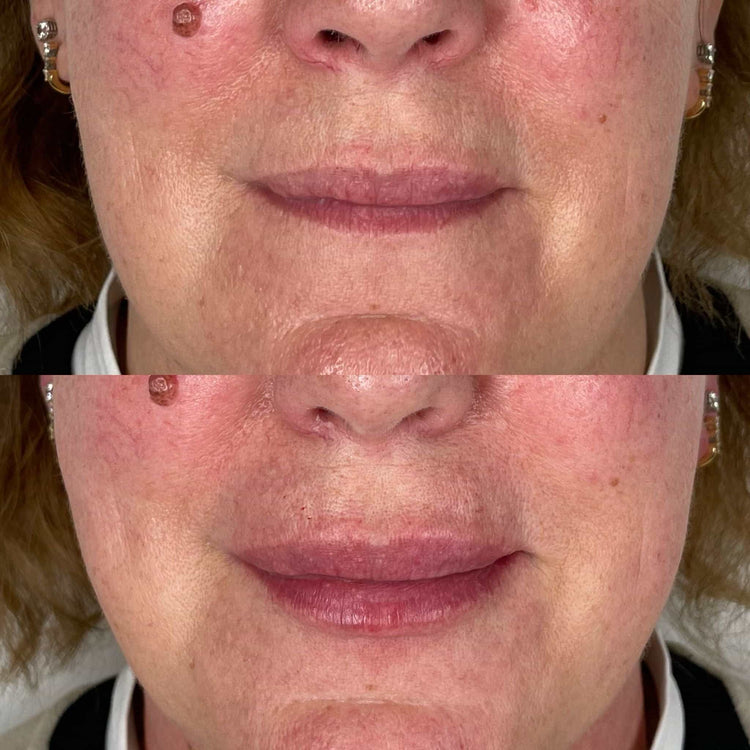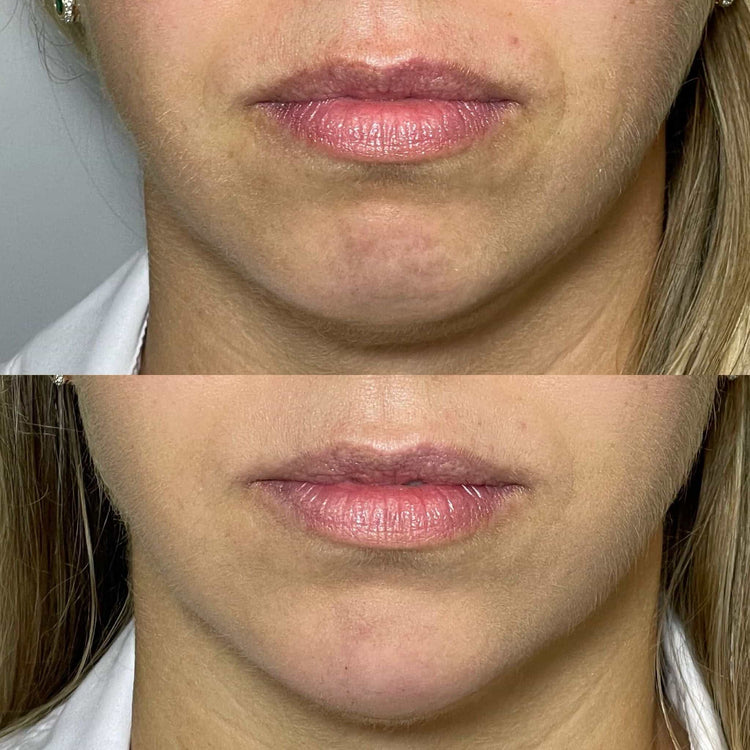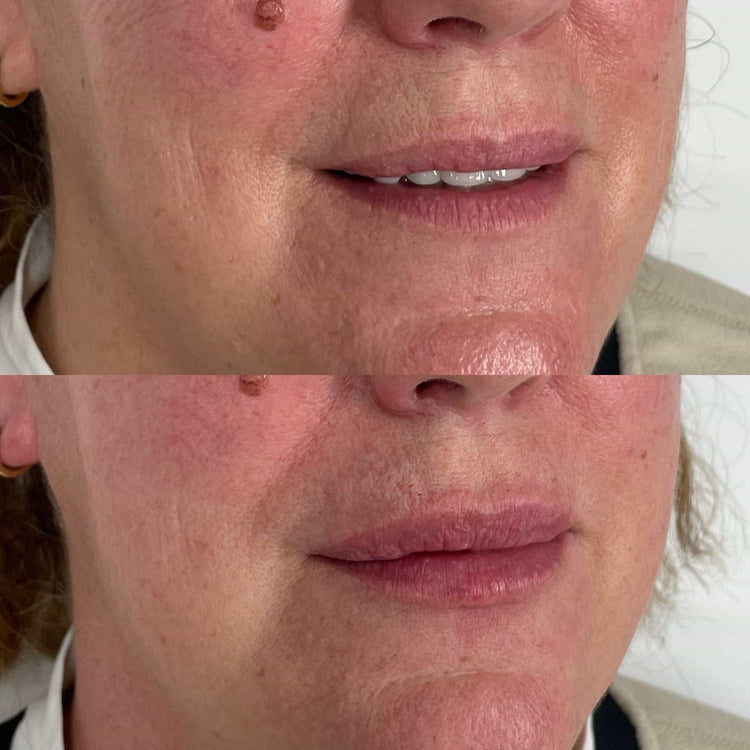Botox for Upper Face Wrinkles
Upper face wrinkles can significantly impact one’s appearance, often making individuals appear older than they feel. Fortunately, advancements in cosmetic treatments have provided effective solutions for minimizing these lines. Botox, a popular neurotoxin, has emerged as a leading treatment for upper face wrinkles, offering noticeable results with minimal downtime.
Understanding Upper Face Wrinkles
Botox is derived from botulinum toxin, a naturally occurring protein that temporarily paralyzes muscles when injected. When injected into the muscles responsible for causing frown lines, crow’s feet, and forehead wrinkles, Botox relaxes these muscles, smoothing out the skin and reducing the appearance of wrinkles.
The effects of Botox typically last for several months, gradually fading as the muscle function returns. Repeated treatments can prolong the results and help prevent new wrinkles from forming. Botox injections are a non-surgical, minimally invasive procedure that requires minimal downtime, making it a popular choice for individuals seeking a quick and effective solution for upper face wrinkles.
Causes of Upper Face Wrinkles
Upper face wrinkles can significantly impact one’s appearance, often making individuals appear older than they feel. Fortunately, advancements in cosmetic treatments have provided effective solutions for minimizing these lines. Botox, a popular neurotoxin, has emerged as a leading treatment for upper face wrinkles, offering noticeable results with minimal downtime.
Several factors contribute to the formation of upper face wrinkles.
- Sun exposure: Ultraviolet (UV) radiation from the sun damages the skin’s collagen and elastin fibers, leading to wrinkles and sagging.
- Aging: As we age, our skin naturally loses its elasticity and produces less collagen, making it more prone to wrinkling.
- Facial expressions: Repeated movements of facial muscles, such as frowning, squinting, and smiling, can create creases and wrinkles over time.
- Genetics: Some individuals are genetically predisposed to developing wrinkles earlier than others.
Benefits of Botox for Upper Face Wrinkles
Botox is a popular treatment for upper face wrinkles because it offers noticeable results with minimal downtime.
When injected into the muscles responsible for frown lines, crow’s feet, and forehead wrinkles, Botox relaxes these muscles, smoothing out the skin and reducing the appearance of wrinkles.
The effects of Botox typically last for several months, gradually fading as the muscle function returns.
Treatment Procedure
Botox injections are administered into specific muscles in the upper face that cause frown lines, crow’s feet, and forehead wrinkles. The procedure involves a series of tiny injections using a fine needle. During the treatment, patients may experience a slight pinch or tingling sensation, but it is generally well-tolerated.
The number of injections needed varies depending on individual needs and the severity of wrinkles.
After the procedure, patients can typically resume their normal activities immediately.
While some mild bruising or swelling may occur at the injection sites, these side effects are usually temporary and subside within a few days.
Consultation and Assessment
Upper face wrinkles can significantly impact one’s appearance, often making individuals appear older than they feel. Fortunately, advancements in cosmetic treatments have provided effective solutions for minimizing these lines.
Botox, a popular neurotoxin, has emerged as a leading treatment for upper face wrinkles, offering noticeable results with minimal downtime.
Several factors contribute to the formation of upper face wrinkles.
- Sun exposure: Ultraviolet (UV) radiation from the sun damages the skin’s collagen and elastin fibers, leading to wrinkles and sagging.
- Aging: As we age, our skin naturally loses its elasticity and produces less collagen, making it more prone to wrinkling.
- Facial expressions: Repeated movements of facial muscles, such as frowning, squinting, and smiling, can create creases and wrinkles over time.
- Genetics: Some individuals are genetically predisposed to developing wrinkles earlier than others.
Botox is a popular treatment for upper face wrinkles because it offers noticeable results with minimal downtime.
When injected into the muscles responsible for frown lines, crow’s feet, and forehead wrinkles, Botox relaxes these muscles, smoothing out the skin and reducing the appearance of wrinkles.
The effects of Botox typically last for several months, gradually fading as the muscle function returns.
Botox injections are administered into specific muscles in the upper face that cause frown lines, crow’s feet, and forehead wrinkles. The procedure involves a series of tiny injections using a fine needle. During the treatment, patients may experience a slight pinch or tingling sensation, but it is generally well-tolerated.
The number of injections needed varies depending on individual needs and the severity of wrinkles.
After the procedure, patients can typically resume their normal activities immediately.
While some mild bruising or swelling may occur at the injection sites, these side effects are usually temporary and subside within a few days.

Botox Injection Process
Upper face wrinkles can significantly impact one’s appearance, often making individuals appear older than they feel. Fortunately, advancements in cosmetic treatments have provided effective solutions for minimizing these lines. Botox, a popular neurotoxin, has emerged as a leading treatment for upper face wrinkles, offering noticeable results with minimal downtime.

Botox is derived from botulinum toxin, a naturally occurring protein that temporarily paralyzes muscles when injected. When injected into the muscles responsible for causing frown lines, crow’s feet, and forehead wrinkles, Botox relaxes these muscles, smoothing out the skin and reducing the appearance of wrinkles.
The effects of Botox typically last for several months, gradually fading as the muscle function returns. Repeated treatments can prolong the results and help prevent new wrinkles from forming. Botox injections are a non-surgical, minimally invasive procedure that requires minimal downtime, making it a popular choice for individuals seeking a quick and effective solution for upper face wrinkles.
Botox injections are administered into specific muscles in the upper face that cause frown lines, crow’s feet, and forehead wrinkles. The procedure involves a series of tiny injections using a fine needle. During the treatment, patients may experience a slight pinch or tingling sensation, but it is generally well-tolerated.
The number of injections needed varies depending on individual needs and the severity of wrinkles.
After the procedure, patients can typically resume their normal activities immediately.
While some mild bruising or swelling may occur at the injection sites, these side effects are usually temporary and subside within a few days.
Recovery and Aftercare
Upper face wrinkles can significantly impact one’s appearance, often making individuals appear older than they feel. Fortunately, advancements in cosmetic treatments have provided effective solutions for minimizing these lines. Botox, a popular neurotoxin, has emerged as a leading treatment for upper face wrinkles, offering noticeable results with minimal downtime.
Botox is derived from botulinum toxin, a naturally occurring protein that temporarily paralyzes muscles when injected. When injected into the muscles responsible for causing frown lines, crow’s feet, and forehead wrinkles, Botox relaxes these muscles, smoothing out the skin and reducing the appearance of wrinkles.
The effects of Botox typically last for several months, gradually fading as the muscle function returns. Repeated treatments can prolong the results and help prevent new wrinkles from forming. Botox injections are a non-surgical, minimally invasive procedure that requires minimal downtime, making it a popular choice for individuals seeking a quick and effective solution for upper face wrinkles.
Botox injections are administered into specific muscles in the upper face that cause frown lines, crow’s feet, and forehead wrinkles. The procedure involves a series of tiny injections using a fine needle. During the treatment, patients may experience a slight pinch or tingling sensation, but it is generally well-tolerated.
The number of injections needed varies depending on individual needs and the severity of wrinkles. After the procedure, patients can typically resume their normal activities immediately. While some mild bruising or swelling may occur at the injection sites, these side effects are usually temporary and subside within a few days.
Results and Longevity
Botox is a popular treatment for upper face wrinkles because it offers noticeable results with minimal downtime. When injected into the muscles responsible for frown lines, crow’s feet, and forehead wrinkles, Botox relaxes these muscles, smoothing out the skin and reducing the appearance of wrinkles.
The effects of Botox typically last for several months, gradually fading as the muscle function returns. Repeated treatments can prolong the results and help prevent new wrinkles from forming.
Botox injections are administered into specific muscles in the upper face that cause frown lines, crow’s feet, and forehead wrinkles. The procedure involves a series of tiny injections using a fine needle. During the treatment, patients may experience a slight pinch or tingling sensation, but it is generally well-tolerated.
The number of injections needed varies depending on individual needs and the severity of wrinkles. After the procedure, patients can typically resume their normal activities immediately. While some mild bruising or swelling may occur at the injection sites, these side effects are usually temporary and subside within a few days.
Potential Risks and Side Effects
Botox is generally safe when administered by a qualified medical professional. However, like any medical procedure, there are potential risks and side effects associated with Botox injections for upper face wrinkles.
Some common side effects of Botox include temporary bruising, swelling, redness, and tenderness at the injection site. These side effects typically resolve within a few days.
More serious but less common side effects may include drooping eyelids or eyebrows, muscle weakness, headache, nausea, and difficulty swallowing. It is important to inform your doctor about any pre-existing medical conditions or medications you are taking before receiving Botox treatment, as this can help minimize the risk of complications.
In rare cases, Botox can cause allergic reactions or spread beyond the injection site, leading to more severe side effects. If you experience any unusual or concerning symptoms after Botox injections, seek medical attention promptly.
Choosing a Reputable Clinic in Kensington
When choosing a reputable clinic for Botox treatments in Kensington, London, several factors should be considered.
First and foremost, look for a clinic with experienced and qualified practitioners who are fully licensed and registered to administer Botox.
Ensure they have extensive experience treating upper face wrinkles and possess a thorough understanding of facial anatomy and the appropriate injection techniques.
Checking online reviews and testimonials can provide insights into the experiences of previous patients and their satisfaction with the clinic’s services.
Pay attention to feedback regarding the practitioner’s expertise, communication skills, and the overall quality of treatment received.
Another crucial factor is the clinic’s safety and hygiene standards.
The premises should be clean and well-maintained, adhering to strict sterilization protocols.
Inquire about their infection control measures and ensure they utilize single-use needles and sterilized equipment.
Consider factors like location, convenience, and the clinic’s overall atmosphere when making your decision.
A comfortable and welcoming environment can contribute to a more positive treatment experience.
Finally, don’t hesitate to schedule consultations with different clinics in Kensington to compare their services, pricing, and suitability for your individual needs.
Cost Considerations
Botox is a popular choice for treating upper face wrinkles in Kensington, London, due to its effectiveness and minimal downtime. However, the cost of Botox treatments can vary depending on several factors.
Pricing Factors
Several factors influence the price of Botox in Kensington, London. These include:
The number of units of Botox required: The quantity of Botox needed to achieve desired results varies based on the severity of wrinkles and individual patient characteristics. More units generally translate to a higher cost.
The practitioner’s experience and reputation: Highly experienced and renowned practitioners often charge higher fees due to their expertise, demand, and proven track record.
Location of the clinic: Clinics in prime locations within Kensington may have higher overhead costs, which can be reflected in their pricing.
The specific treatment area: Botox injections for more extensive areas, such as the entire forehead or upper face, will typically cost more than treatments targeting specific wrinkles.
Discounts and promotions: Some clinics offer introductory offers, package deals, or seasonal discounts that can reduce the overall cost of treatment.

Payment Options
Botox costs in Kensington, London, can vary significantly depending on several factors such as the number of units required, the practitioner’s experience, location of the clinic, and the specific treatment area. Prices for Botox treatments targeting upper face wrinkles typically range from £250 to £600 or more per session.
Payment options at clinics offering Botox treatments in Kensington usually include cash, credit cards (Visa, Mastercard, etc.), debit cards, and sometimes financing plans or payment installments.
FAQs about Botox for Upper Face Wrinkles
Botox has become a popular treatment for upper face wrinkles in Kensington, London. If you’re considering Botox to smooth frown lines, crow’s feet, or forehead wrinkles, this FAQ section will provide valuable information about the procedure, its benefits, potential risks, and costs.
What to Expect During Treatment?
What can I expect during a Botox treatment for upper face wrinkles?
Botox injections are administered into specific muscles in your upper face that cause frown lines, crow’s feet, and forehead wrinkles. The procedure involves a series of tiny injections using a fine needle. You may experience a slight pinch or tingling sensation during the treatment, but it is generally well-tolerated.
How many injections will I need?
The number of injections needed varies depending on individual needs and the severity of wrinkles. Your practitioner will determine the appropriate number based on your desired outcome and facial anatomy.
Will there be any downtime after treatment?
Botox treatments are non-surgical and minimally invasive, with minimal downtime. You can typically resume your normal activities immediately after the procedure.
Are there any side effects?
Some common side effects of Botox include temporary bruising, swelling, redness, and tenderness at the injection site. These side effects usually resolve within a few days.
More serious but less common side effects may include drooping eyelids or eyebrows, muscle weakness, headache, nausea, and difficulty swallowing.
What are the risks associated with Botox?
Botox is generally safe when administered by a qualified medical professional. However, like any medical procedure, there are potential risks and side effects associated with Botox injections. It’s important to inform your doctor about any pre-existing medical conditions or medications you are taking before receiving treatment.
Where can I find a reputable clinic for Botox treatments in Kensington?
When choosing a clinic, look for experienced and qualified practitioners who are fully licensed and registered. Check online reviews and testimonials, and ensure the clinic adheres to strict safety and hygiene standards.
How Long Does the Effect Last?
The effects of Botox typically last for several months, gradually fading as the muscle function returns. Repeated treatments can prolong the results and help prevent new wrinkles from forming.
Are There Alternatives to Botox?
There are a few alternatives to Botox for treating upper face wrinkles.
- Dermal Fillers: These injectable gels are made of hyaluronic acid, a substance that naturally occurs in the body and helps keep skin hydrated and plump. Fillers can be used to add volume to areas like the cheeks, temples, or under the eyes, helping to reduce the appearance of wrinkles.
- Chemical Peels: Chemical peels involve applying a chemical solution to the skin, which exfoliates the outer layers and stimulates cell turnover. This can help improve skin texture, reduce fine lines, and diminish hyperpigmentation (dark spots).
- Microneedling: This procedure involves using tiny needles to create micro-injuries in the skin. These injuries trigger the body’s natural healing process, which leads to the production of new collagen gracebelgravia.com and elastin, improving skin elasticity and reducing wrinkles.
- Laser Resurfacing: Lasers can be used to remove the top layers of damaged skin, revealing smoother, younger-looking skin underneath. Different types of lasers are available, each targeting specific concerns like wrinkles, sun damage, and pigmentation.
It’s important to consult with a qualified dermatologist or plastic surgeon to determine which treatment option is most suitable for your individual needs and goals.
Is Botox Safe?
Is Botox safe?
Botox is generally considered safe when administered by a qualified medical professional. Like any medical procedure, there are potential risks and side effects associated with Botox injections. It’s important to inform your doctor about any pre-existing medical conditions or medications you are taking before receiving treatment.
Some common side effects of Botox include temporary bruising, swelling, redness, and tenderness at the injection site. These side effects usually resolve within a few days.
More serious but less common side effects may include drooping eyelids or eyebrows, muscle weakness, headache, nausea, and difficulty swallowing. In rare cases, Botox can cause allergic reactions or spread beyond the injection site, leading to more severe side effects. If you experience any unusual or concerning symptoms after Botox injections, seek medical attention promptly.
How Long Do The Benefits Of Botox Last?
Teeth Grinding Treatment in London & Kingston, Surrey – It’s Me & You
Explore the Latest Innovations
Get in Touch Today
Kahh Spence Beauty
- When Can I Smoke After Lip Filler - June 19, 2025
- What Are The Options For Jowl Treatment In Kingston Upon Thames, Surrey - June 15, 2025
- The Spectrum Of Gender Nonconformity: Key Terms You Need To Know - June 11, 2025
